| The Chubasco "A wind that blows in the Gulf of California." |
|
On the 14th - 16th December 1990, at the customary annual anniversary of the 'Casa', Maserati presented three new models.  The beautiful lines of the Chubasco, designed by Marcello Gandini. From the first discussions Marcello Gandini had with the Maserati design office, it was clear that the car to be created would be new and revolutionary in every respect. The point of departure: the mechanicals. 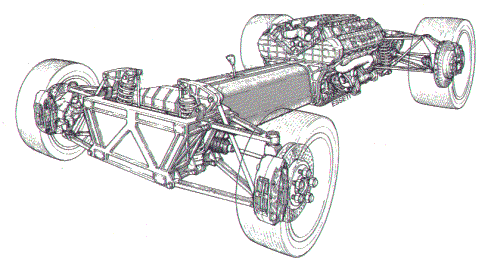
The chassis was to be a central beam in combination with a supporting engine-transmission group.
The chassis would provide anchor points for the front push-rod and rear pull-rod suspensions, with a hydraulic lifting and progressive rigidity system and rockers with inboard springs, a solution typical of F1, which leaves room for two large lateral ducts for air passage and distribution.
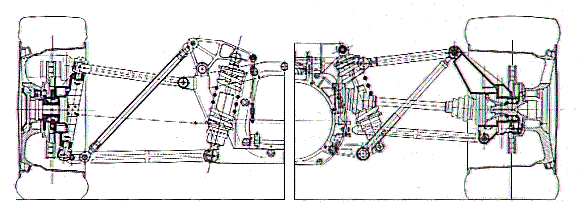
The push-rod front suspension and the pull-rod rear suspension.
In plan view, these ducts are shaped so that the airflow taken in by three large frontal airscoops is accelerated and exhausted laterally under the doors, providing a pressure drop beneath the side panels, thus enhancing the strong ground-effect produced by the rear ramp and flat under-tray.
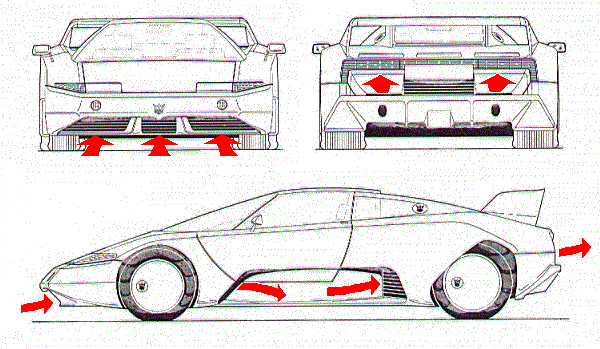
The air flow taken in by the three frontal air scoops is accelerated and exhausted laterally under the doors. Cooling air for the engine is taken by two other air scoops in front of the rear wheels and is exhausted at the rear.
The monocoque or carbody is ideally conceived as a floating cell connected to the frame by means of damping supports that absorb vibrations from the engine, transmission, suspensions and wheels, insulating the cockpit from whole frequency range of noise and vibrations and from torsion.
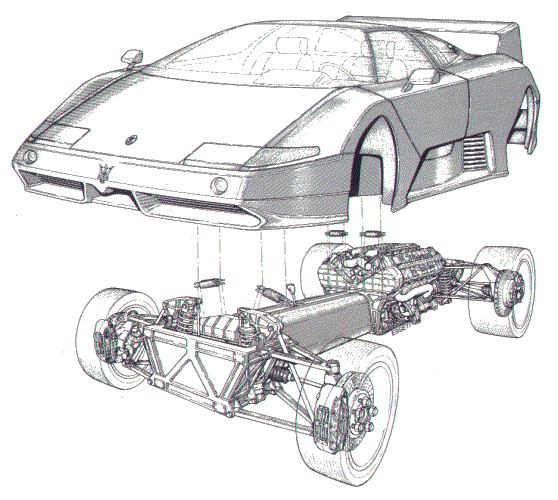
The car body is conceived as a floating cell all connected to the chassis by means of dampening supports.
The doors are single-hinged in front and open upward and forward. 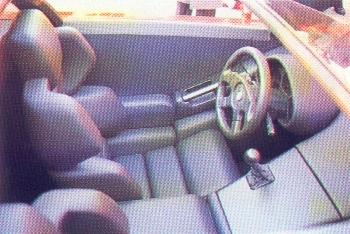
Once the technical and aerodynamic foundations were laid, it was easy for Marcello Gandini to give shape to this design, which can be described as the ideal objective, or better the dream, of every style designer: to design the automobile that every car-lover would designfor him- self once in his life.
So 'fierce-looking" it speeds up onlooker's heartbeats, so out of the ordinary it stops traffic, so handsome it creates an irrepressible desire to possess it, so strong and muscular it transmits a flattering message about its owner's character, with that touch of glamour that causes doubletakes, a beautifully smooth, refined sculpture that could graciously adorn a living-room. 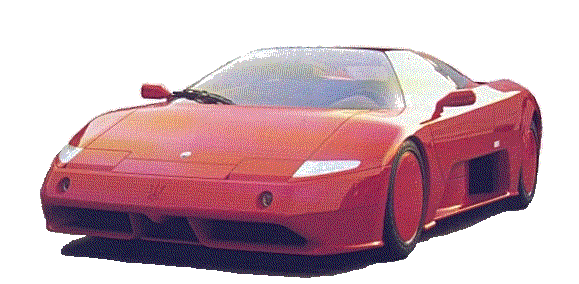 The sight all Maserati enthusiasts would love to have seen on the road. |
| The Chubasco - Technical Data and Dimensions. | |
| Engine | Rear engined twin-turbo V 8-cyl @ 90º |
| Cubic capacity | 3217 cc |
| Distribution | Four overhead camshafts with 4 valves per cylinder |
| Power output | 430bhp @ 6500 rpm |
| Lubrication | Dry sump |
| Gearbox and clutch | 6-speed and reverse - dry twin-plate plate |
| Transmission | Rear wheel drive |
| Wheelbase | 2310mm |
| Wheel track | Front - 1640mm / Rear - 1660mm |
| Bodywork | Two-seater |
| Overall dimensions | Length - 4365 mm / Width - 2014 mm / Height - 1124 mm |
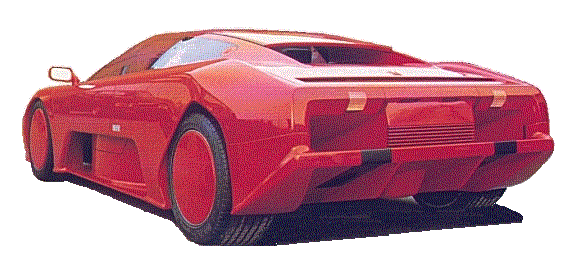 | |
| The view that most driver's would have seen, had it gone into production! | |
 |
||
|
To enter Enrico's Maserati Pages CLICK HERE! All the text and images are the sole copyright of Maserati SpA - © 1990-2004. All rights reserved. |